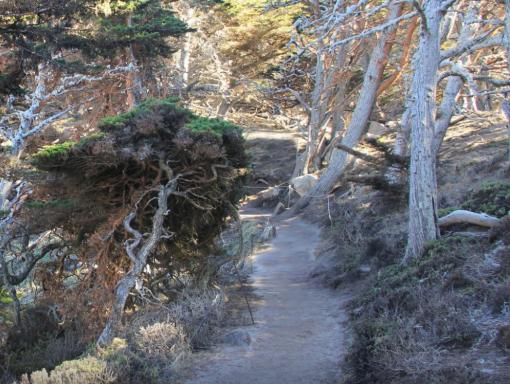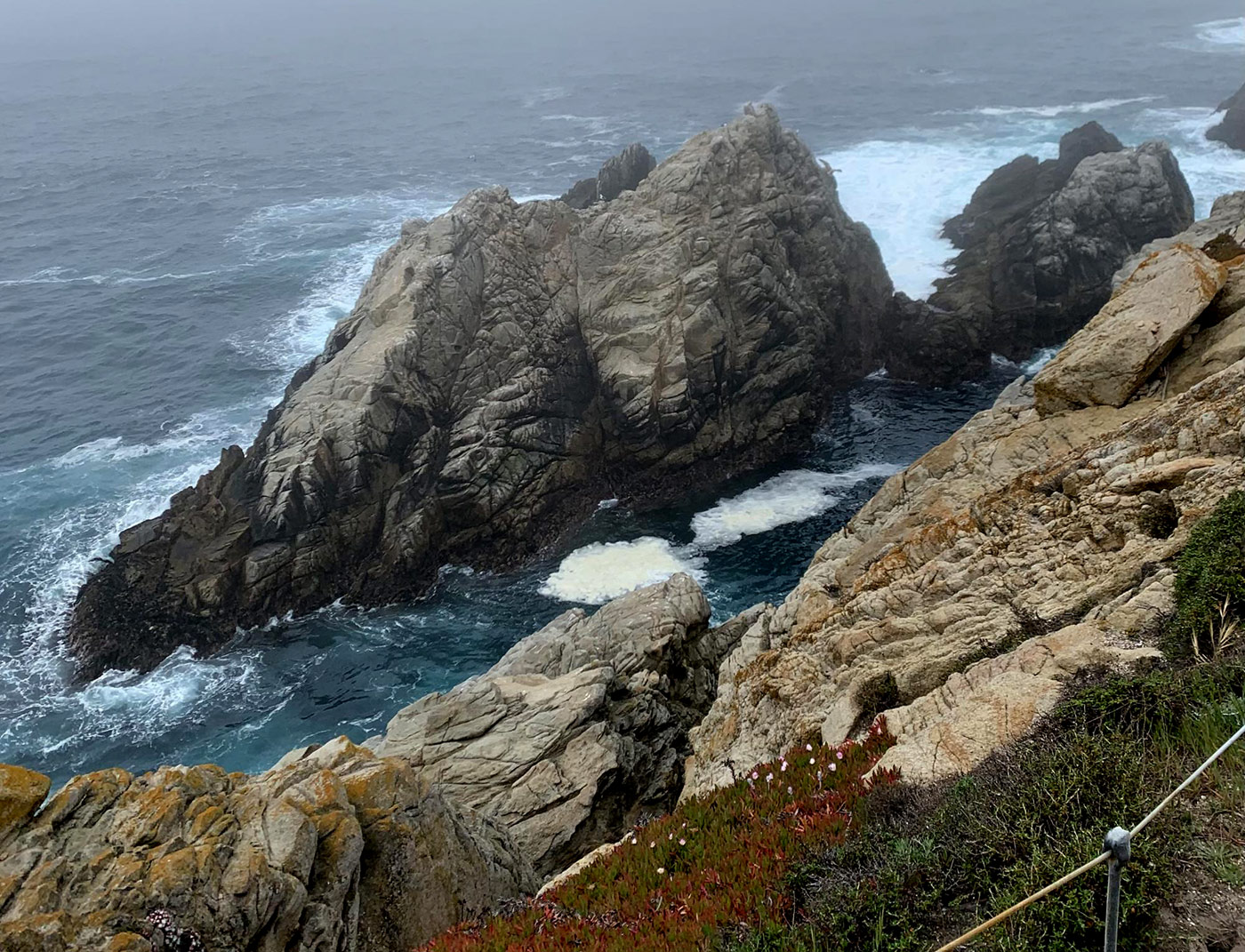This 0.8 mile trail starts at the Sea Lion Point parking area and provides a walk through coastal scrub and then loops through mostly cypress forest outlined by cliffs with dramatic and spectacular ocean views. A Trail Guide available at the Information Station at the trail head will help you understand what you are seeing. The trail is accessible for 0.25 mile and offers excellent views of Headland Cove.
 The favorite of many visitors, the Cypress Grove Trail winds through one of the two naturally growing stands of Monterey cypress trees remaining on Earth. (The other grove is across Carmel Bay at Cypress Point.)
The favorite of many visitors, the Cypress Grove Trail winds through one of the two naturally growing stands of Monterey cypress trees remaining on Earth. (The other grove is across Carmel Bay at Cypress Point.)
These cypresses, which formerly extended over a much wider range, withdrew to these fog-shrouded headlands as the climate changed with the close of the Pleistocene epoch 15,000 years ago. The outermost trees surviving in the teeth of salt spray and wind, their roots seeking nourishment in cracks and crevices, mirror the forces of nature and time.
Take time here to enjoy nature’s array of California sea lions on the outer rocks, sea otters among swirling canopies of giant kelp in Headland Cove, wildflowers clinging to chinks (“bluff lettuce” at right) in the granite walls, and the delicate and harmless lace lichen bearding dead understory limbs. This trail affords a great place to see gray whales migrating by in winter and early spring, and other whales at other times.

Foggy day on Cypress Grove trail. Photo credit: Donita Grace.
Point Lobos State Natural Reserve was originally acquired to protect these gnarled trees. This particular grove is a memorial to Mr. and Mrs. A.M. Allan. The orange, velvety “stuff” especially noticeable on trees and rocks of the shadowed north-facing slopes is green algae named Trentepohlia. Its orange color comes from carotene, a pigment which also occurs in carrots. The growth does not harm the trees.
Between the loop trail and the parking area, and amid the dense shrubbery off trail, a keen-eyed visitor may discover a dozen or more large mounds of twigs. These are dusky-footed woodrat houses, which may achieve great age and size as successive owners add to them.

